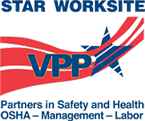 There’s no doubt about it, confined space entry is risky business. A first consideration should always be to try and eliminate the known and potential hazards – or, even better, “engineer out” the need for entry when possible. If it’s not possible (or feasible), and entry must be made, then as part of OSHA’s Permit-Required Confined Space standard (1910.146), the employer must take action to protect its workers. This regulation requires employers to develop and implement procedures for summoning rescue and emergency services, for rescuing entrants from permit spaces, and for preventing unauthorized personnel from attempting a rescue.
There’s no doubt about it, confined space entry is risky business. A first consideration should always be to try and eliminate the known and potential hazards – or, even better, “engineer out” the need for entry when possible. If it’s not possible (or feasible), and entry must be made, then as part of OSHA’s Permit-Required Confined Space standard (1910.146), the employer must take action to protect its workers. This regulation requires employers to develop and implement procedures for summoning rescue and emergency services, for rescuing entrants from permit spaces, and for preventing unauthorized personnel from attempting a rescue.
Planning for rescue of the entrant should always be approached in a logical hierarchy. The first choice for rescue should always be “self-rescue.
However, there are too many lads named “Murphy” lurking about to be able to rely on this as the only means of rescue. That leads to the next option, which is “retrieval rescue.” This means that retrieval (or rescue) of the entrant(s) can be made without anyone else having to enter the space.
To facilitate non-entry rescue, retrieval systems or methods shall be used whenever an authorized entrant enters a permit space, unless the retrieval equipment would increase the overall risk of entry or would not contribute to the rescue of the entrant. The retrieval system shall include a chest or full body harness, with a retrieval line attached at the center of the entrant’s back near shoulder level, above the entrant’s head, or in such a way to present a small enough profile for successful removal of the entrant. In certain instances wristlets may be used. The retrieval line shall be attached to a fixed point outside the space or to a mechanical device. For vertical entries more than 5 feet in depth, a mechanical device such as a retrieval winch or mechanical advantage rope system shall be available.
Relying on non-entry retrieval rescue requires a thorough and honest assessment of the retrieval system’s ability to function as intended should the need arise. Are there any entanglement issues within the space that would cause the retrieval line to fail? If the entrant must travel around any 90 degree corners or between levels, will the retrieval line work? Any and all potential causes of retrieval system failure would require the need to plan for entry rescue.
One of the advantages of non-entry retrieval rescue is that oftentimes it can be performed by the attendant. Modern retrieval equipment may utilize powerful gear reductions or rope mechanical advantages and are usually quite easy for the attendant to learn to operate. It is encouraged and quite common for the attendant to be trained and capable of performing non-entry rescue. The attendant is prohibited, however, from entering the space to perform rescue unless properly trained and equipped for ”entry rescue,” which is the last option in the hierarchy of rescue.
NOTE: Even if the attendant is trained and equipped for entry rescue, he or she must be relieved by another authorized attendant before abandoning their attendant duties.
Entry rescue requires the rescuer(s) to enter the confined space, thus possibly exposing them to the same hazards as the victim. That’s why it is critical for rescuers to be trained and equipped with the proper PPE to protect themselves from the hazards involved. In fact, OSHA states that if you don’t have the proper PPE or training, DO NOT ATTEMPT THE RESCUE!
This warning is driven by the great number of “would be” rescuers dying in confined spaces while attempting to save a life. Safe, successful entry rescue requires sufficient training in the proper techniques, a proficiency in the use of the appropriate PPE and rescue equipment, and the ability to recognize and identify the hazards and potential hazards in confined spaces.
Again, it’s important to keep in mind that there are many permit required confined spaces where non-entry retrieval is a viable option – and it should be used whenever possible. Vertical utility vaults with no entanglement hazards, horizontal entries with no corners or elevation changes are just a few. The proper course is to always perform a thorough assessment of the space to determine which type of rescue will be needed and to make sure the appropriate rescue response is in place should the entrants need assistance.



 By Greg Botelho, CNN - October 13, 2010 3:40 p.m. EDT
By Greg Botelho, CNN - October 13, 2010 3:40 p.m. EDT



